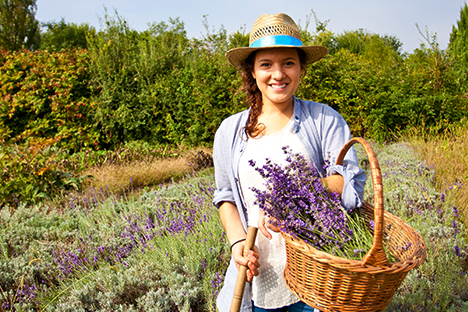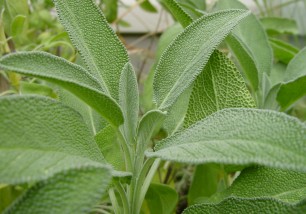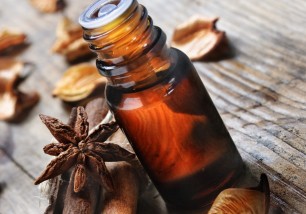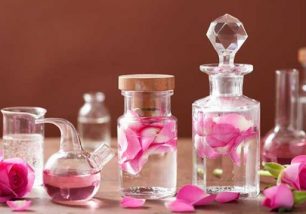HOW TO MAKE HOMEMADE ESSENTIAL OILS
aromatherapyaromatic wateressential oilsteam distillation
Essential oils, the set of aromatic substances responsible for the scent of plants, are known and have been used since ancient times. Over the centuries there is an alternation of glory and oblivion, the latter essentially following the progress of chemistry and synthetic molecules. But already since the 1990s, essential oils have returned to being investigated and, in particular, there has been an ever-broader use of Aromatherapy.
This term refers to the use of essential oils in order to improve the quality and feeling of health and well-being on a physical, emotional and mental level.
The extraction of essential oils from aromatic plants is certainly a fascinating process, which requires a thorough study of plants, but easily achievable even within our home in extreme simplicity.
WHAT DO YOU NEED?
- a distiller
- a gas or electric cooker
- water
- aromatic plants with a high content of essential oils (Mint, Lavender, Thyme, Rosemary, Savory, Sage, etc.).
It is not necessary to have a chemical laboratory, as this can work on the stove in your kitchen … it is as easy as making pasta!
The raw material must be available of course, that is, the plants to be distilled: about 2 kg of fresh plants are enough, picked up in the exact period in which the plant reaches the maximum concentration of active ingredients.
In small distillers a small quantity of aromatic plants is enough and it is therefore fundamental that they have in their plant cells a high concentration of essence, otherwise we would not be able to extract even one drop. For example by distilling Lavender or Lavandin (Dutch lavander), Rosemary, Thyme, Sage, Mint, Savory, Lemon verbena and Eucalyptus, it will be possible to obtain up to 10 ml of essential oil, completely produced by you!
Essential oils are extracted by steam distillation, a technique that exploits the steam produced by boiling water, which, passing through the plant placed in the distiller carries with it the aromatic molecules contained in the plant cells. These molecules are very light, small in size and therefore easily vaporized. The water vapor and the volatile molecules continue their path passing inside a condenser and returning both to a liquid state.
Essential oils are naturally lighter than water and therefore they will float above the so-called aromatic water (the steam returned to a liquid in which micro drops of essential oil are dispersed, which give to it the typical scent of the distilled plant). The two liquids, being unmixable, can be easily separated using a simple separating funnel.
DISTILLATION PRODUCTS:
Pure essential oil
Aromatic water also called hydrolat.
Aromatic water is not a “waste” product but it is the second product of distillation that can be widely used, from ironing water, to cleansing tonics for the face, but also to water our plants with an enhanced water with an important antiseptic power.
Recall that the essential oil just distilled, does not always have a pleasant smell, because it needs to ripen for a few weeks, in which it must be left to mature.
Watch the video: how to extract essential oils
CONSERVATION:
The essential oil produced is a very delicate substance that can easily change and turn rancid, thus losing its natural scent and developing substances that could also be harmful. Therefore it is important to store them in dark glass bottles away from direct light and heat sources.
As we all know, essential oils are used in drops; in fact, their use must be limited to small quantities, since these substances are highly concentrated and rich in active molecules, many of which can also have toxic effects. Therefore it is always necessary to be careful while using them, asking advice from experts.
“Distillating is imitating the sun that evaporates the water from the earth and returns it as rain”
Dioscorides (40-90 A.D.)
More informations on:
Other articles that may interest you:
Aromatic water or floral waters: what are they?
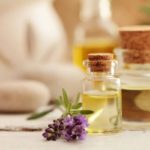 ESSENTIAL OILS: WELLNESS IN HOME
ESSENTIAL OILS: WELLNESS IN HOME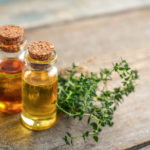 THYME ESSENTIAL OIL: USES AND PROPERTIES
THYME ESSENTIAL OIL: USES AND PROPERTIES AROMATHERAPY: HOW TO CHOOSE AN ESSENTIAL OIL
AROMATHERAPY: HOW TO CHOOSE AN ESSENTIAL OIL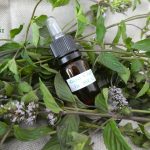 HOW TO DISTILL MINT
HOW TO DISTILL MINT AROMATHERAPY: HISTORY
AROMATHERAPY: HISTORY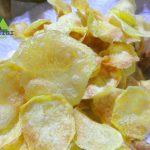 POTATO CHIPS WITH ROSEMARY AROMATIC WATER
POTATO CHIPS WITH ROSEMARY AROMATIC WATER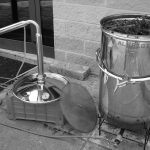 ROSEMARY ESSENTIAL OIL: CULTIVATION AND PRODUCTION
ROSEMARY ESSENTIAL OIL: CULTIVATION AND PRODUCTION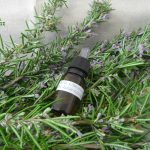 HOW TO DISTILL ROSEMARY
HOW TO DISTILL ROSEMARY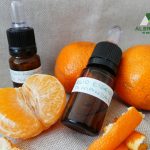 HOW TO DISTILL TANGERINE PEEL
HOW TO DISTILL TANGERINE PEEL NEEM OIL, FROM THE PLANT OF GOOD HEALTH
NEEM OIL, FROM THE PLANT OF GOOD HEALTH HERBAL TEAS, INFUSIONS AND DECOCTIONS: THE DIFFERENCES AND METHODS OF PREPARATION
HERBAL TEAS, INFUSIONS AND DECOCTIONS: THE DIFFERENCES AND METHODS OF PREPARATION HOW TO MAKE HOMEMADE ESSENTIAL OILS
HOW TO MAKE HOMEMADE ESSENTIAL OILS HEALTHY HAIR WITH AROMATIC PLANTS
HEALTHY HAIR WITH AROMATIC PLANTS THE GOOD NIGHT PLANTS
THE GOOD NIGHT PLANTS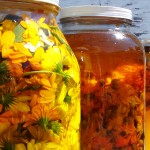 OLEOLITES: THE POWER OF HERBS IN OIL
OLEOLITES: THE POWER OF HERBS IN OIL ENFLEURAGE: ANCIENT TECHNIQUE TO EXTRACT ESSENCES FROM FLOWER PETALS
ENFLEURAGE: ANCIENT TECHNIQUE TO EXTRACT ESSENCES FROM FLOWER PETALS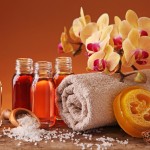 ESSENTIAL OILS AND ECOLOGICAL DETERGENTS FOR HOUSE CLEANING
ESSENTIAL OILS AND ECOLOGICAL DETERGENTS FOR HOUSE CLEANING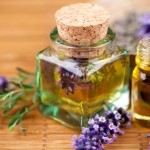 OIL FOR STRENGTHENING HAIR
OIL FOR STRENGTHENING HAIR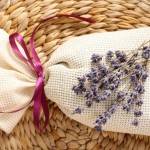 SCENTED BAGS WITH DRIED HERBS AND ESSENTIAL OILS
SCENTED BAGS WITH DRIED HERBS AND ESSENTIAL OILS PURIFYING AND CLEANSING HERBAL TEAS DO-IT-YOURSELF
PURIFYING AND CLEANSING HERBAL TEAS DO-IT-YOURSELF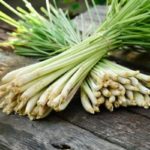 LEMONGRASS: ESSENTIAL OIL TO FIGHT TUMORS
LEMONGRASS: ESSENTIAL OIL TO FIGHT TUMORS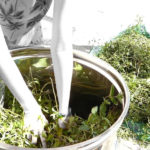 MINT ESSENTIAL OIL: CULTIVATION AND PRODUCTION
MINT ESSENTIAL OIL: CULTIVATION AND PRODUCTION CITRUS FRUITS AND ALZHEIMER’S DISEASE: NEW DISCOVERIES
CITRUS FRUITS AND ALZHEIMER’S DISEASE: NEW DISCOVERIES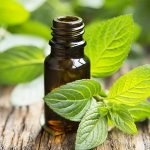 MINT ESSENTIAL OIL: USES AND PROPERTIES
MINT ESSENTIAL OIL: USES AND PROPERTIES
